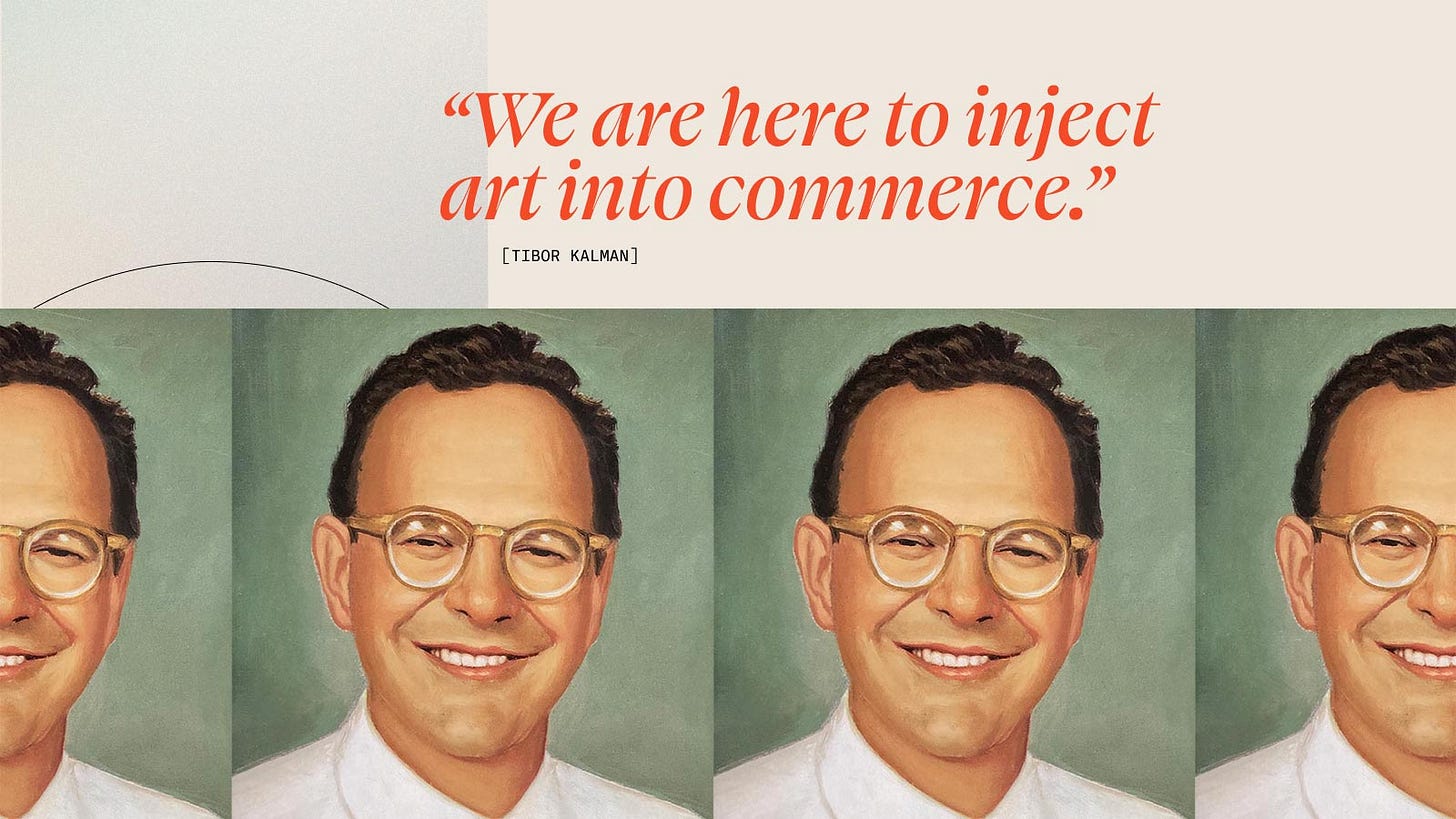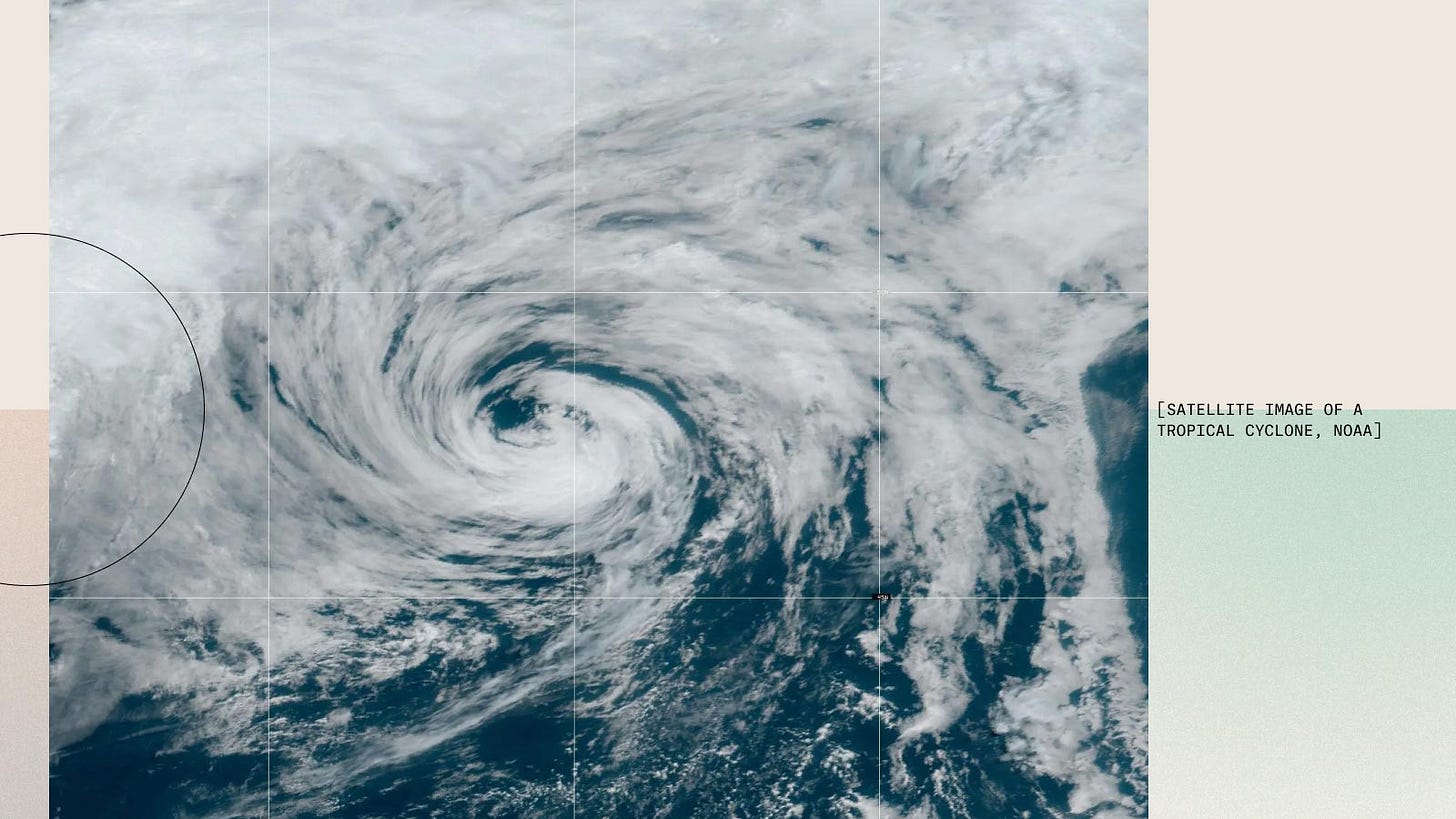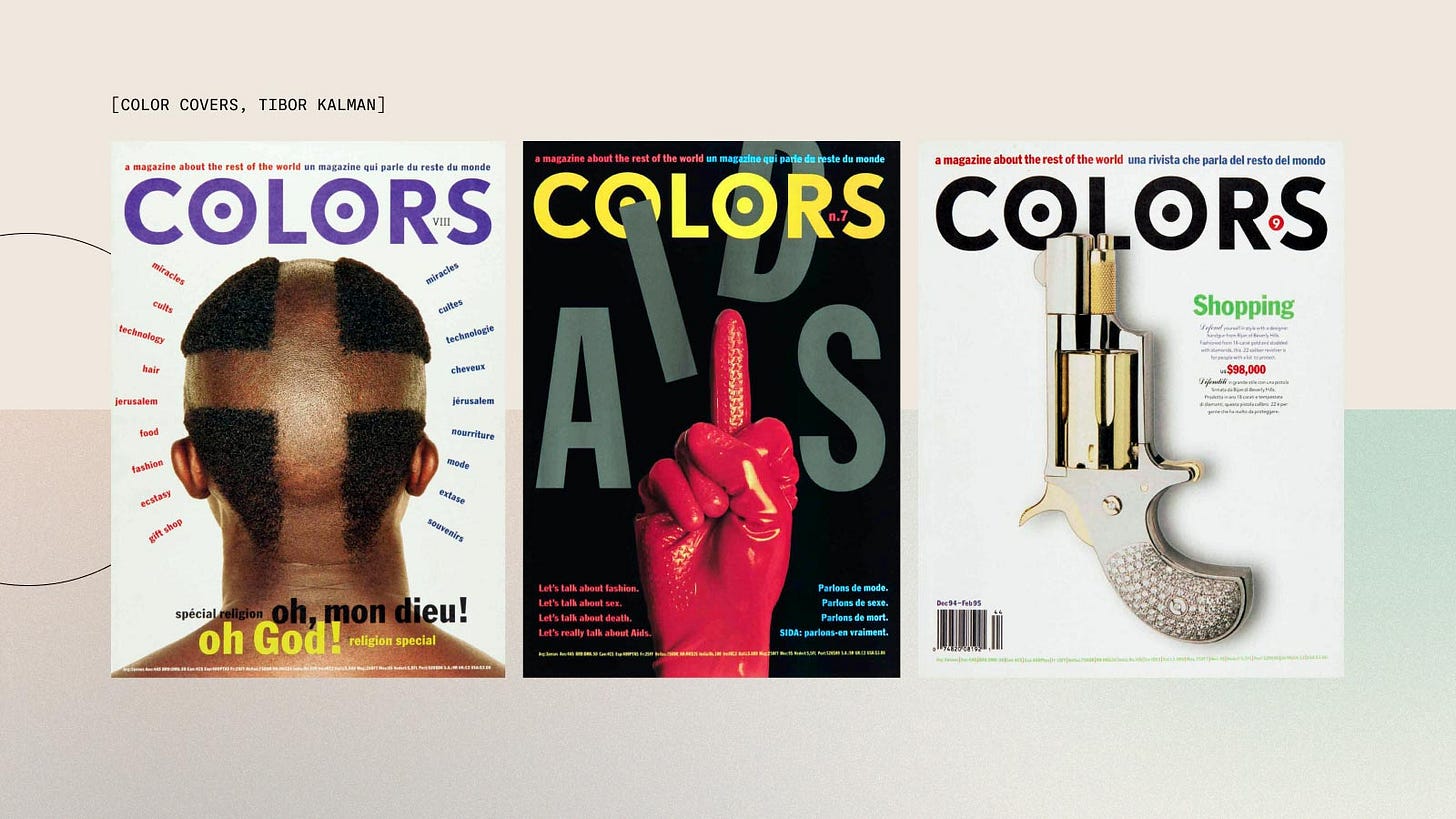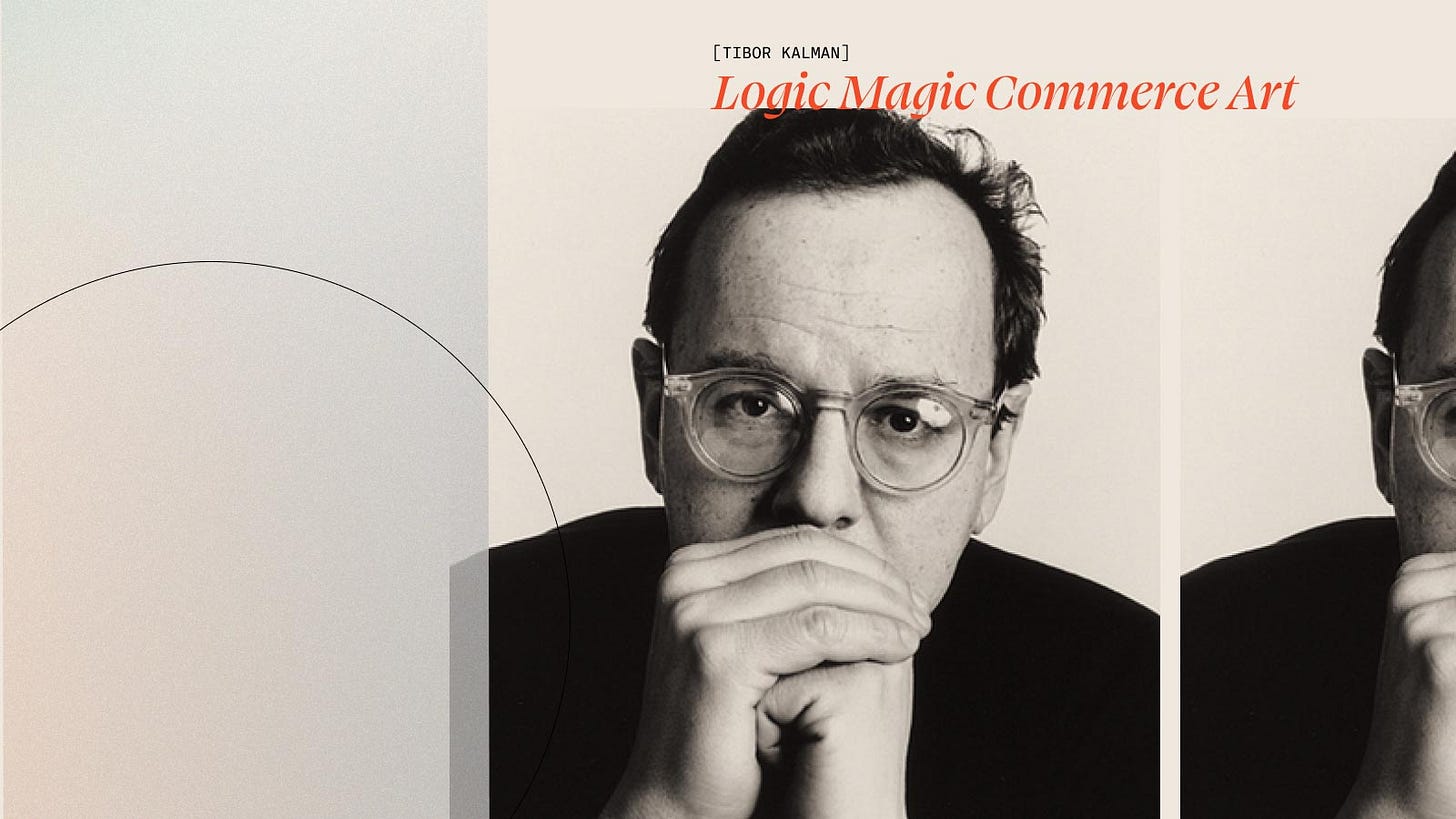Balancing Logic & Magic
The time I thought I knew better than one of the OG impact designers. Ready for a deep dive?
I originally wanted this to be an easy piece about an old quote I found. How I thought it was outdated and how I brilliantly “fixed it”.
Oh boy, was I wrong.
What unfolded instead was a look into a fascinating creative life and a personal learning experience much deeper than what I had expected.
The Entitled Designer’s Mindset
Okay, so I recently stumbled over this quote by famous graphic designer Tibor Kalman:
"We’re here to inject art into commerce."
I thought that it encapsulated what might be single biggest mental roadblock in using design for positive impact: The entitled designer’s mindset.
Kalman’s quote seemed to speak to the widespread idea that a self-serving artistic pursuit is a key ingredient in our line of work — a perspective I’ve witnessed in the field again and again, and one that regularly creeps into my thoughts, as well:
I’m more than “just” a designer.
“Design isn’t art. It’s a service.”
It’s a nice thing to think. I’s flattering, and it elevates your self-worth, something especially creative types often struggle with, as it is so intertwined with our output.
We like the idea that what we create in the context of clear business objectives should still be seen as something that stands on its own.
Like art.
Only that’s not true. Design isn’t art. It’s a service.
If you ask me, there’s nothing wrong with being of service. Quite the opposite, actually, and especially when you’re servicing mission-aligned clients, whose good work and positive impact can be multiplied by well-crafted, strategic creative work.
Art is an amazing, powerful, beautiful force, partly because it is allowed to exist just to exist. And we need it in the world, maybe now more than ever.
But if you want to make art, be an artist.
We Can’t Afford This!
My whole point was this:
Tibor Kalman died in 1999, and his famous quote was coined about 34 years ago, maybe longer. The world had changed dramatically since.
First off, it has become harder than ever to cut through the noise, and actually reach people:
We consume over 13 hours of media1 and check our phone 96 times a day on average.2 Every second, 955 pictures are uploaded to Instagram.3 The global advertising industry is projected to reach over $769 Billion in revenue this year,4 on the back of social media and it’s never-ending churn of assets, micro-content and scroll-stoppers.
We can’t take a chance on art if we want our message to reach an audience. We need strategically developed, tried & tested approaches that deliver results.
“Arctic ice is melting so fast, it’s literally changing time!”
At the same time, climate change is accelerating:
The hottest day ever measured was July 21, 2023,5 and while our oceans are also heating up dramatically,6 we might need to adapt our hurricane-severeness-scale just to keep up with how dangerous they are becoming.7 Climate change even fucks with our understanding of time: Arctic ice is melting so fast, it has decreased Earth's actual rotational velocity!8 Look it up, it’s bonkers.
With grim news like these, I can’t help but wonder:
Can we even afford to waste time on “injecting art into commerce”? Who cares about art when the ice caps are melting?And isn’t the pursuit of artistic expression in the context of a design practice a lofty, overly intellectual, self-aggrandizing approach to something that could empower a better version of commerce, when approached strategically?
The OG of Impact Design
That’s where my head was. I thought I had it all figured out.
But then insecurity kicked in. You see, I’ve dabbled in a lot of things, but I never actually majored in design. And so I didn’t receive the same depth of classical education my peers enjoyed in their university careers.
Therefore, one of the things I didn’t know about, was the context of Kalman’s quote. So, I looked it up. And of course, there’s more to it.
The quote stems from a longer essay, originally published in 1990 — a fiery manifesto addressing everything that, in Kalman’s opinion, was wrong with the design world at the time:
“We have begun to dress like our clients and talk like our clients and even worse, think like our clients,” he wrote. From his perspective, the fine balance between artistic expression and business interest that was holding creative studios in check and creative output quality high was endangered by one side taking over — “the business side, the marketing side”.
“Maybe the client doesn’t need a brochure.
Maybe he needs a career change.”
Kalman goes on saying that “maybe the client doesn’t need a brochure. Maybe he needs a new product. Maybe he really needs an advertising campaign. Or a decent copywriter. Or a career change. Maybe we should tell him.”
Feisty. I like it.
But I also found the following excerpt, and this is when I got giddy:
“We might have an impact on how companies do business. We might be able to make them better, or smarter, or more socially responsible.”
While Kalman was focused on the integrity of his craft and the perceived downfall of design quality, none of it was happening in a vacuum for him. He urged designers to take more responsibility for their work’s impact on society and culture.
In 1986, he was the co-chairman of a design conference aptly named “Dangerous Ideas” — an event focusing on how designers contribute to environmental waste and promote products that harm people or the environment.
One Christmas season, instead of the usual presents, Kalman’s creative studio M&Co send boxes with the content of a typical city shelter meal to clients, with a note saying the studio would match all monetary contributions to homeless shelters.
Later on, Kalman worked as Editor and Creative Director for magazines like Art Forum and Interview, to then accept what would probably become his most meaningful job:
He closed his design firm in 1991 to move to Italy and co-publish the Benetton-funded, radically political Colors magazine.9 To this day, designers and editors everywhere describe Colors as one of the most fundamental works on the intersection of art and commerce. It was radical, it was disruptive, and, as Kalman put it, “aimed at an audience of flexible minds.”10
“It was radical, it was disruptive, and aimed at an audience of flexible minds.”
And so it seems that Tibor Kalman, in many ways, was the OG of impact design.
He wanted his industry to improve creatively, so that it would maximize its impact strategically. Over three decades ago, Kalman was already seeking to disrupt the way the creative industry informed commercial interests.
And here I was, thinking I knew better. Ok, buddy.
Balancing Logic and Magic
Equipped with that additional context, I now understand the use of the word “art” in Kalman’s quote as synonymous with what Marty Neumeier calls “magic” when he says:
“Whenever there’s a rift between strategy & creativity — between logic and magic — there’s a brand gap. It can cause a brillant strategy to fail where it counts most, at the point of contact with the customer, or it can doom a bold creative initiative before it’s even launched (…).”11
Kalman describes it as the above-mentioned “traditional balance in design firms” where “one partner can design and the other partner can hustle.”12 Logic. Magic. Strategy. Art.
I’m humbled and happy to learn that what I’ve set out to writing this newsletter about (the positive influence of design in the face of the Climate Catastrophe) has been infused with radical ideas we can draw inspiration and guidance from by creative leaders like Kalman for at least 35 years, probably longer.13
How’s this for an update, Tibor?
Let’s summarize.
To effectively utilize creativity for purpose, we need to re-marry strategy and art, logic and magic.
We will need to approach our work in a way that aligns creative output with our client’s larger strategic business goals, but we can and should utilize our knowledge of “magic” to constantly push the envelope — new problems need creative solutions, and designers who dare to think bigger creatively might do well in partnering with impact-led strategists who can help these ideas to actually create the much needed impact.
So, how about this for an update:
“We’re here for a collaborative effort across professions that marries strategy with artistry to inject purpose into commerce.”
I know. Less punchy.
But I still hope Tibor would appreciate the thought process.
I hope this was as entertaining for you to read as it was for me to research and write. Let me know which part tickled you most in the comments, yes?
Peace & Pizza,
Eric
Statista Research Department (2020) “Average time spent with major media per day in the Unites States as of April 202, by format.
PR Newswire (2019) “Americans check their phones 96 times a day.”
IMARC Group (2020) “Global Advertising Market to Reach US$ 769.9 Billion by 2024, Strengthened by the Proliferation of Digital Media.”
Dickie, Gloria (23 July 2024). "World recorded hottest day on July 21, monitor says". Reuters. Retrieved 24 July 2024.
Paddison, Laura (18 March 2024). "Global ocean heat has hit a new record every single day for the last year". CNN. Archived from the original on 21 March 2024.
Wehner, Michael F.; Kossin, James P. (5 February 2024). "The growing inadequacy of an open-ended Saffir–Simpson hurricane wind scale in a warming world". Proceedings of the National Academy of Sciences. 121 (7): e2308901121. Bibcode:2024PNAS..12108901W. doi:10.1073/pnas.2308901121. PMC 10873601. PMID 38315843.
Shahvandi, Mostafa Kiani; Adhikari, Surendra; Dumberry, Mathieu; Soja, Benedikt (15 July 2024). "The increasingly dominant role of climate change on length of day variations". Proceedings of the National Academy of Sciences (PNAS). 121 (30): e2406930121. doi:10.1073/pnas.2406930121. PMC 11287281. PMID 39008671.
Marty Neumeier, The Brand Gap (2006), p. 18
There are reports from Kalman’s design conference “Dangerous Ideas” in San Antonio, Texas in 1989, where Tibor Kalman attended an impromptu panel discussion that sounds like a (quite nerdy) rap battle in hindsight: https://designobserver.com/feature/1989-roots-of-revolution/1957






